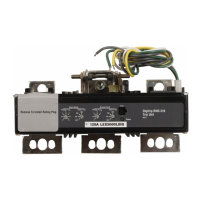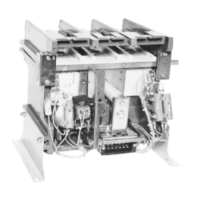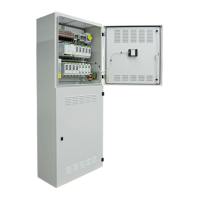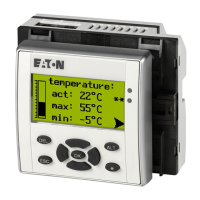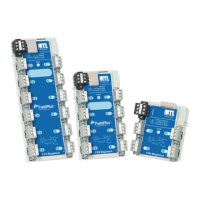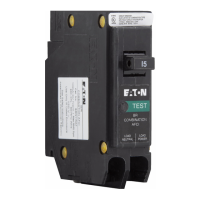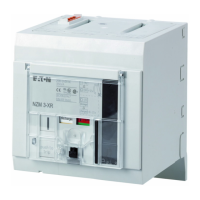AD 33-855-4
Page 75
SECTION
14 EXPLANATION
OF TIME
CURRENT
CURVES
14.1
Explanation of the
Time
Gurrent
Curves
(LSl)
Digitrip RMS
Trip
Units
and Digitrip
Retrofit Kits
have been
designed to upgrade
existing Breakers
to meet the same
protection
requirements
of the
most
modern Power Circuit
Breakers. ln
fact, the
Trip Unit and Direct
Trip Actuator
(DTA)
are
electri-
cally identical
to those found on current
DS Break-
ers.
They are built
in the
same
manufacturing
facilities,
with the same high
level of
Quality
Con-
trol, as those on
the DS Breakers. ln this
way, we
assure
that the Retrofit Designs are
as up to date
as our current
production.
All Digitrip
RMS Trip Units are designed
to meet
the
protection
requirements of
a modern
power
distribution system.
As is shown
in Figure 14-1
,
Application Current
Levels can be broken
into
three
typical regions:
.
NORMAL currents,
the magnitude of
which is
within the system continuous
current
rating;
.
OVERLOAD currents,
which exceed
the system
continuous
current rating and
where conductor
heating is the
primary
concern
(such
as with an
overloaded
motor, for example);
.
FAULT currents,
which are usually
caused by
an unintended
current
path (either phase
to
phase
or
phase
to
ground)
and can
lead to
currents as high as
the maximum short
circuit
available
from the system.
Digitrip RMS
Trip Units, when set up
according
to
the results of a Power System
study of
the specific
distribution system
on which they are
applied,
will
respond
to various current
levels to
provide
accu-
rate system
protection
as well as
maximum system
stability
by
properly
coordinating
with upstream
and downstream
devices
(Figure
14-1).
.
For
NORMAL currents,
the Trip Unit
will
accurately
monitor the current,
regardless of
current
waveform
(due
to its true RMS sensing
system),
assuring
that up to full rated
current
may
flow through the system
without
falsely
tripping
the
breaker.
This
is
shown
as the
NORMAL
OPERATING CONDITION
in
Figure 14-1 .
.
For OVERLOAD currents,
the Trip Unit
will
accurately assess
the true heating
value of the
current
(again
a distinct advantage
of
its true
RMS sensing
system), and
trip out following
the LONG DELAY
TRIP TIME curve in
Figure
14-1 . There are actually
eight different
LONG
DELAY
TRIP TIME curves
available on
the Trip.
Unit
(selected
by the Long Delay
Time switch
setting),
and each curve
follows a constant
lzt
slope for excellent
heating
protection
and
coordination
with other devices.
The
lowest
level of OVERLOAD
current
to bring on this
response is selected by
the Long Delay
Pickup
setting on
the Trip Unit.
.
For FAULT currents,
the Trip Unit will
respond
according
to either the SHORT
DELAY TRIP
TIME or the INSTANTANEOUS
TRIP
TIME
shown
in Figure 14-1
,
depending
on the
fault
current magnitude
and whether the Short
Delay
function or lnstantaneous
function or both are
present
on the
Trip
Unit.
Efiective 9/01
FlT.il
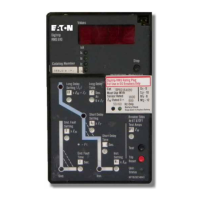
